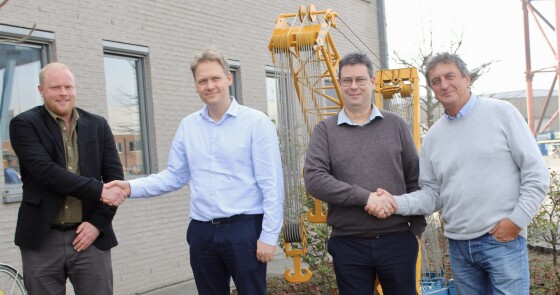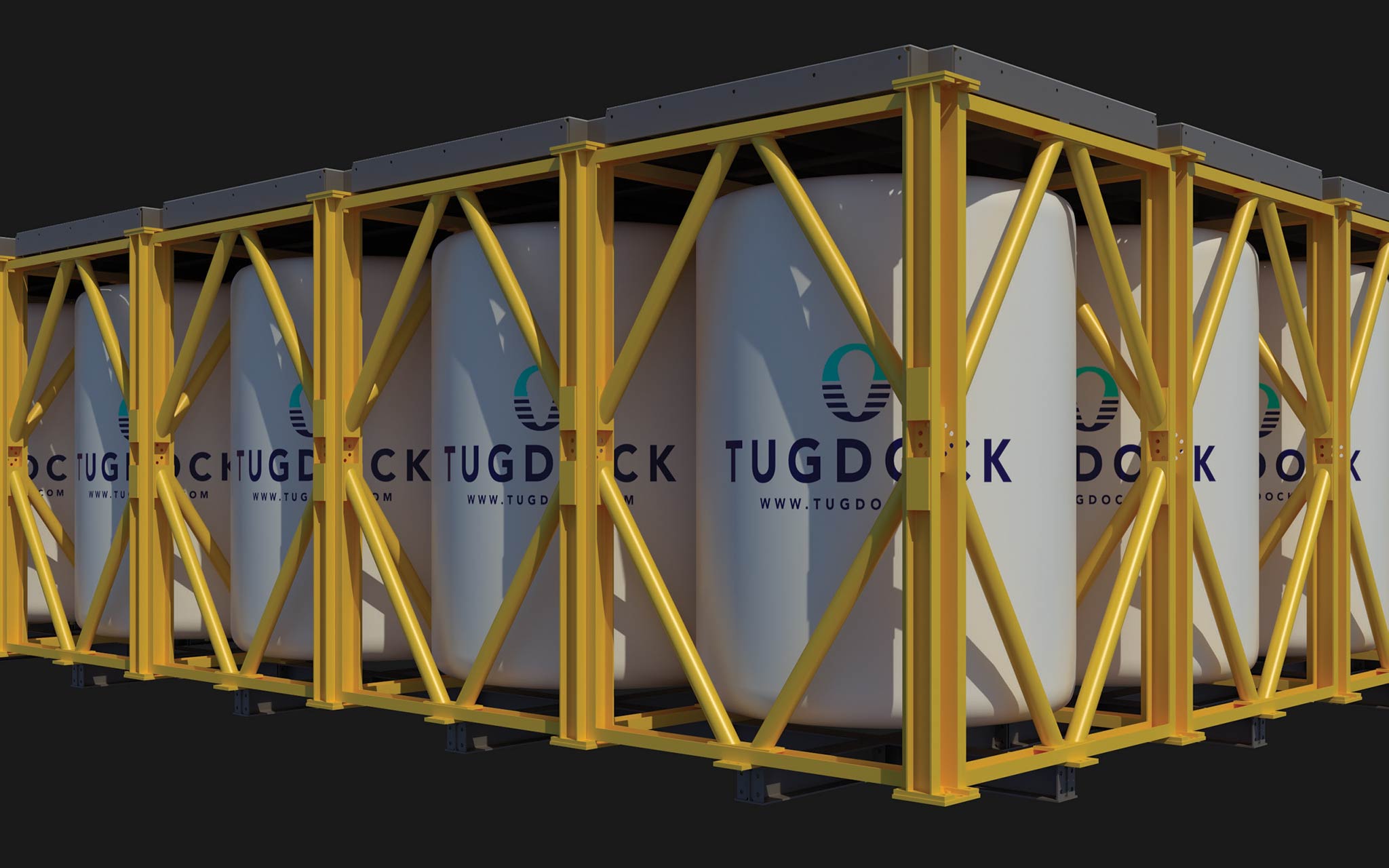Tugdock Limited has developed what it describes as the world’s first road transportable floating dry dock.
Few ports have sufficient water depth and assembly space to build the floating substructures required for offshore wind turbines and conventional dry docks are not generally wide enough as they are designed for ships.
Tugdock’s patented marine buoyancy bag technology allows floating dry docks to be delivered by road in modular form and assembled at the port to greater dimensions than most existing dry docks. The system comprises a modular pinned steel frame with air lift bags and an air compressor. By combining these into a deck structure, Tugdock can be used as additional buoyancy or as a submersible platform for lifting or launching heavy marine structures, including substructures for floating offshore wind.
Tugdock has caught the attention of Sarens, which has bought a minority stake from founder Shane Carr to support the growth of both companies in the floating offshore wind industry.
Tugdock business development director Lucas Lowe-Houghton explained: “The floating offshore wind sector is expected to continue to grow rapidly. However, very few of the world’s ports have sufficient water depth and assembly quay space to build the huge turbine floaters required and conventional dry docks are not wide enough as they were originally designed for ships. Tugdock’s patented marine buoyancy bag technology solves this issue. It allows floating dry docks to be delivered by road in modular form and assembled at the port to dimensions far wider than most of the world’s existing dry docks.”

He continued: “Our submersible floating dry docks can operate with as little as five metres draft, enabling more efficient wind turbine floater construction. The platform is then towed to deeper water for launching of the turbines. More than 8% of the total cost of a floating offshore wind farm is accounted for by assembly and installation. So, any innovation that allows this process to be carried out more efficiently and quickly will have a big impact on profitability for developers.”
More than 20 gigawatts of floating offshore wind power is expected to be commissioned globally by 2035, requiring more than 2,600 wind turbines.
Sarens technical director Carl Sarens said: “Through this partnership with Tugdock, we are able to streamline the solution we offer to developers. By significantly reducing time and costs, our alliance will deliver a step change for wind turbine construction. In addition, Tugdock’s flexibility and reusability is useful to global developers as the units can be reused from one port or project to another regardless of changes in turbine size or foundation weight.”
Tugdock chief executive Shane Carr said: “Working in partnership with a large multinational such as Sarens will accelerate our development, enabling further innovation to keep us at the forefront of the floating offshore wind industry.”

Got a story? Email news@theconstructionindex.co.uk











